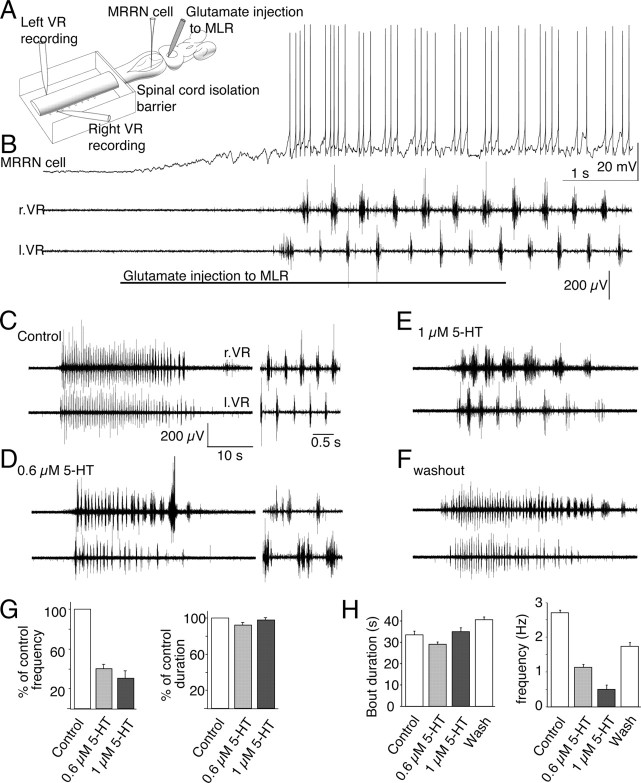Figure 1.
5-HT reduces the cycle frequency of brainstem-evoked locomotion. A, Recording arrangement to evaluate effects of spinal agonist/antagonist application on brainstem-evoked fictive locomotion. The spinal cord was pharmacologically isolated from the brainstem with a barrier to superfusate flow at the second to fifth spinal segment. Glutamate (1 mm) was microinjected into the MLR from a pipette (1–2 μm diameter tip). MRRN neurons were recorded intracellularly and fictive locomotion with suction electrodes over left and right pairs of spinal ventral roots (l.VR, r.VR). B, Five second injection of l-glutamate into the MLR evokes depolarization and rhythmic firing of the MRRN neuron and alternating ventral root activity. C, Similar control fictive locomotion to B recorded in a pair of ventral roots and activated by 5 s glutamate microinjection to the MLR. The entire duration of the fictive swimming bout is shown along with activity from the bout in extended time base to show the frequency of alternating activity (inset right). D, 5-HT (0.6 μm) superfused over the spinal cord reduced fictive locomotion cycle frequencies with no modification of the bout duration. Inset, Time base-expanded activity. E, 5-HT (1 μm) further reduced cycle frequencies but had no effect on total bout duration. F, Wash of 5-HT from the spinal compartment allowed recovery of the cycle frequency. G, Mean effects of 5-HT on fictive locomotor bout duration and cycle frequency on all preparations tested. Data were normalized to control values before 5-HT application. 5-HT reduced cycle frequencies but left bout durations unchanged. H, Mean effects over three sequential glutamate injections from which examples were taken (C–F) of 0.6 and 1 μm 5-HT on total bout duration (start to end of fictive swim) and cycle frequency compared with control and wash of 5-HT. Error bars indicate SEM.

